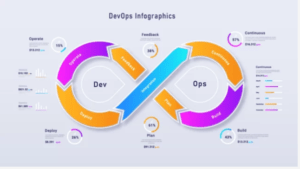Table of Contents
ToggleIntroduction.
In the ever-evolving world of cloud computing, serverless architecture has emerged as one of the most transformative paradigms for building modern applications. As developers increasingly seek ways to build, deploy, and scale applications faster without the burden of managing servers serverless computing offers a compelling solution. It allows you to focus solely on writing code, while your cloud provider, like Amazon Web Services (AWS), takes care of the infrastructure, scaling, availability, and fault tolerance.
AWS, a pioneer and leader in the cloud space, offers a rich ecosystem of serverless services designed to streamline application development and operations. Whether you’re building REST APIs, real-time data processing pipelines, web applications, or backend services, AWS provides robust tools that can help you go from idea to production in record time. No server provisioning. No patching. No worrying about idle resources or underutilized infrastructure.
Yet, with so many options available on AWS, it can be overwhelming for beginners to know where to start. What services do you need to begin your serverless journey? Which ones are essential? Which ones offer the most value with the least complexity?
This blog post is here to guide you through that very first step. We’ll explore the top 5 AWS services every serverless beginner should know tools that will become the backbone of your cloud-native applications. These services are not only foundational, but they’re also battle-tested, widely adopted, and supported by a vibrant developer community. From event-driven functions to managed APIs and scalable NoSQL databases, each service plays a critical role in the serverless ecosystem.
Whether you’re a student, a startup founder, a backend developer transitioning to the cloud, or someone just curious about the hype, these tools will empower you to build applications that are cost-efficient, highly available, and infinitely scalable all without managing a single server.
So, if you’re ready to dive into the world of serverless development, let’s take a closer look at the core services that make it all possible. These are the building blocks of serverless on AWS and your launchpad to mastering cloud-native development.
Let’s begin.
AWS Lambda – The Heart of Serverless Computing.
At the center of AWS’s serverless offerings is AWS Lambda, a powerful compute service that fundamentally changes how we run code in the cloud. With Lambda, you can run backend logic, event-driven code, and data processing workflows without provisioning or managing a single server. You simply upload your function code, define a few configurations like memory and timeout, and AWS takes care of everything else: provisioning, scaling, fault tolerance, monitoring, and even billing.
The most revolutionary aspect of Lambda is its event-driven architecture. Your functions are triggered by events, such as an HTTP request via API Gateway, an object upload to S3, a change in a DynamoDB table, or a message in SQS. This allows you to create modular, scalable systems that respond automatically to real-world inputs without constant oversight or manual scaling.
Lambda supports multiple programming languages, including Python, Node.js, Java, Go, Ruby, and .NET, giving developers the flexibility to choose the best tool for the job. Whether you’re creating REST APIs, processing images, analyzing logs, or handling asynchronous workflows, Lambda provides a lightweight, pay-as-you-go compute environment that only charges you for the exact execution time billed in milliseconds.
Behind the scenes, Lambda automatically handles the provisioning and scaling of resources. Whether you’re running a single invocation or handling thousands of parallel executions per second, Lambda will scale with your needs instantly and automatically. This elasticity is one of the major reasons Lambda is ideal for applications with unpredictable or bursty workloads.
Another advantage is Lambda’s deep integration with the AWS ecosystem. You can combine it with CloudWatch for logging and monitoring, IAM for fine-grained permissions, Step Functions for orchestrating complex workflows, and countless other AWS services to build comprehensive, production-ready systems.
Security is built-in, with each Lambda function running in its own isolated environment. Plus, with versioning and aliases, you can manage releases and rollbacks with confidence.
Best of all, AWS Lambda fits perfectly into a microservices or event-driven architecture, allowing you to break applications into smaller, independently deployable components. This modular approach leads to better code organization, faster deployments, and easier testing.
AWS Lambda embodies the core philosophy of serverless: run code without thinking about servers. It’s scalable, cost-effective, and powerful making it the first service every serverless beginner should master.
Amazon API Gateway – Building Scalable APIs.
In a serverless application, users still need a way to interact with your backend functions whether through a website, a mobile app, or third-party services. That’s where Amazon API Gateway comes in.
API Gateway is a fully managed service that makes it easy to create, publish, maintain, monitor, and secure RESTful, HTTP, or WebSocket APIs at virtually any scale. It acts as the entry point for your serverless application, seamlessly connecting client requests to AWS Lambda functions or other backend services.
With API Gateway, you can define clear routes and HTTP methods (like GET, POST, PUT, etc.) that trigger specific Lambda functions, giving you full control over how your application handles client requests. It also allows you to configure powerful features like rate limiting, API keys, CORS, authorization, caching, and custom domain names without writing additional code or managing infrastructure.
One of the biggest benefits of API Gateway is its tight integration with AWS Lambda. When a user sends a request to your API, API Gateway parses it, applies any transformations or validations you define, and invokes the corresponding Lambda function.
Once the function executes, API Gateway sends the response back to the client effectively serving as the glue between frontend and backend in a serverless world.
It also supports authentication and authorization mechanisms through AWS Identity and Access Management (IAM), Amazon Cognito, or even custom authorizers built with Lambda. This makes it easier to control access to your APIs and build secure applications from day one.
Another strength of API Gateway is its ability to handle massive amounts of traffic. Whether your API has 10 users or 10 million, it automatically scales to match demand, without you having to provision resources or worry about load balancers, throttling, or DDoS protection it’s all built in.
You can also use deployment stages like dev, test, and prod to manage environments, making it easier to separate workflows and manage releases. Each stage can have its own configuration, logs, metrics, and throttling rules, giving you granular control over your API’s behavior.
Furthermore, API Gateway integrates with AWS CloudWatch to provide detailed metrics and logging, so you can monitor usage, detect errors, and optimize performance based on real-time data. Combined with tools like AWS X-Ray, you get full visibility into how requests are handled end to end.
Amazon API Gateway makes it easy to turn your Lambda functions into fully managed, production-ready APIs.
It removes the complexity of deploying and maintaining backend endpoints and allows you to build scalable, secure, and reliable APIs with minimal overhead. For anyone stepping into serverless development, mastering API Gateway is key to building robust, user-facing applications.
Amazon DynamoDB – NoSQL Database for Serverless Apps.
When building serverless applications, choosing the right database is crucial. You need something that scales automatically, offers low-latency access, and doesn’t require you to manage servers, clusters, or patching. Amazon DynamoDB fits this role perfectly.
It’s a fully managed NoSQL database service designed to deliver fast, predictable performance at any scale. Built for the cloud, DynamoDB is inherently serverless meaning you can focus on building your application without worrying about the underlying infrastructure.
DynamoDB stores data in a key-value and document-based format, which makes it incredibly flexible for a wide variety of use cases. Whether you’re storing user profiles, shopping carts, IoT sensor data, or logs, DynamoDB provides a schema-less structure that adapts to your application’s needs.
One of its most powerful features is on-demand scaling. DynamoDB can handle from a few requests per second to tens of thousands without any manual intervention. You don’t need to worry about provisioning read or write throughput in advance if you use the on-demand capacity mode it scales automatically based on your traffic patterns.
Another key benefit is millisecond-level latency, which makes DynamoDB ideal for applications that require real-time performance. Your users get fast, consistent responses no matter how much your app grows or how global your audience becomes.
For serverless architectures, DynamoDB integrates tightly with AWS Lambda, allowing you to trigger functions in response to changes in your tables using DynamoDB Streams. This makes it easy to build reactive systems for example, processing new user registrations, logging activity, or updating analytics in real-time.
DynamoDB also supports Time to Live (TTL), Global Secondary Indexes (GSI), and Global Tables, which allow you to expire old data, run complex queries, and replicate your data across multiple regions for high availability and global reach.
Security is built-in through AWS IAM, encryption at rest and in transit, and fine-grained access controls. Plus, you can monitor table performance and usage through CloudWatch, ensuring your app runs smoothly and efficiently.
DynamoDB follows a pay-per-use pricing model, meaning you only pay for the read and write units your application actually uses. Combined with on-demand mode, it’s extremely cost-effective for applications with unpredictable or fluctuating workloads.
Amazon DynamoDB is the go-to database for serverless development on AWS. It’s fast, reliable, scalable, and completely hands-off letting you focus on innovation while AWS handles the heavy lifting behind the scenes.
Amazon S3 – Storage Backbone of Serverless Apps.
In any modern application serverless or not data storage is a critical component. Whether you’re dealing with user uploads, static assets, logs, backups, or media files, you need a secure, scalable, and durable place to store that data. That’s exactly what Amazon S3 (Simple Storage Service) offers. It’s one of the most reliable and battle-tested services on AWS, and it plays a foundational role in countless serverless architectures.
S3 is an object storage service designed to store and retrieve any amount of data from anywhere on the web. With 99.999999999% (11 nines) durability, your data is safe and highly available. It’s not just storage it’s storage with built-in scalability, security, and automation.
For serverless developers, S3 becomes even more powerful thanks to its native integration with AWS Lambda. You can configure S3 to automatically trigger a Lambda function whenever a file is uploaded, deleted, or modified in a bucket. This opens the door to workflows like image processing, video transcoding, virus scanning, or automatic metadata extraction all without provisioning a single server.
It also supports fine-grained access control through AWS Identity and Access Management (IAM) and bucket policies, making it secure by design. Encryption (both in transit and at rest) is built in, and features like Object Lock and versioning offer additional data protection.
Additionally, S3 is commonly used to host static websites everything from landing pages to full SPAs (Single Page Applications) served over a custom domain with HTTPS, via integration with Amazon CloudFront.
You only pay for what you use, and with multiple storage classes (like Standard, Intelligent-Tiering, Glacier), S3 is extremely cost-effective for both short-term and long-term storage needs.
Amazon S3 is more than just a place to store files it’s a core component of any serverless system, enabling you to build powerful, automated, and resilient workflows in the cloud.
AWS Step Functions – Orchestrating Serverless Workflows
As your serverless application grows in complexity, so do the interactions between services. Simple Lambda functions might no longer be enough when your workflows require multiple steps, conditional logic, retries, or error handling. That’s where AWS Step Functions comes in. It’s a fully managed orchestration service that helps you coordinate multiple AWS services into seamless, reliable, and maintainable workflows.
Step Functions let you define workflows using state machines, where each state represents a task, choice, or condition. These tasks can be Lambda functions, calls to other AWS services, or even human approval steps. With a visual workflow editor and JSON-based definitions, it’s easy to build, visualize, and understand your application logic no need to hardcode transitions or glue services together manually.
A major benefit is its built-in error handling and retries. If a step fails, Step Functions can automatically retry it based on your defined strategy, making your workflows more robust and resilient to temporary issues like timeouts or throttling.
It also supports parallel execution, enabling you to run tasks simultaneously for faster processing. This is especially useful for batch operations, multi-branch logic, or fan-out patterns.
Step Functions integrate tightly with AWS services like Lambda, ECS, SQS, SNS, DynamoDB, Glue, and more allowing you to build everything from ETL pipelines to order processing systems to machine learning workflows.
The execution history and logging are stored automatically, so you get full visibility into each step’s input, output, and status perfect for debugging or auditing.
You pay only for each state transition, making it cost-effective even at scale. Whether you’re managing a two-step process or a complex, multi-branch workflow, Step Functions scale with your needs and eliminate the need for custom orchestration logic.
AWS Step Functions empower serverless developers to build modular, maintainable, and observable workflows that can handle real-world business logic with ease.
Wrapping Up
Serverless on AWS is a game-changer, especially when you’re just getting started. These five core services Lambda, API Gateway, DynamoDB, S3, and Step Functions form the foundation of most serverless architectures.
Once you’re comfortable with these, you can explore additional tools like Amazon EventBridge, AWS AppSync, or AWS Amplify to build even more dynamic applications.
Ready to go serverless? Start small. Build a basic API with Lambda and API Gateway, store some data in DynamoDB, and scale from there. The serverless future is waiting for you without the servers.





